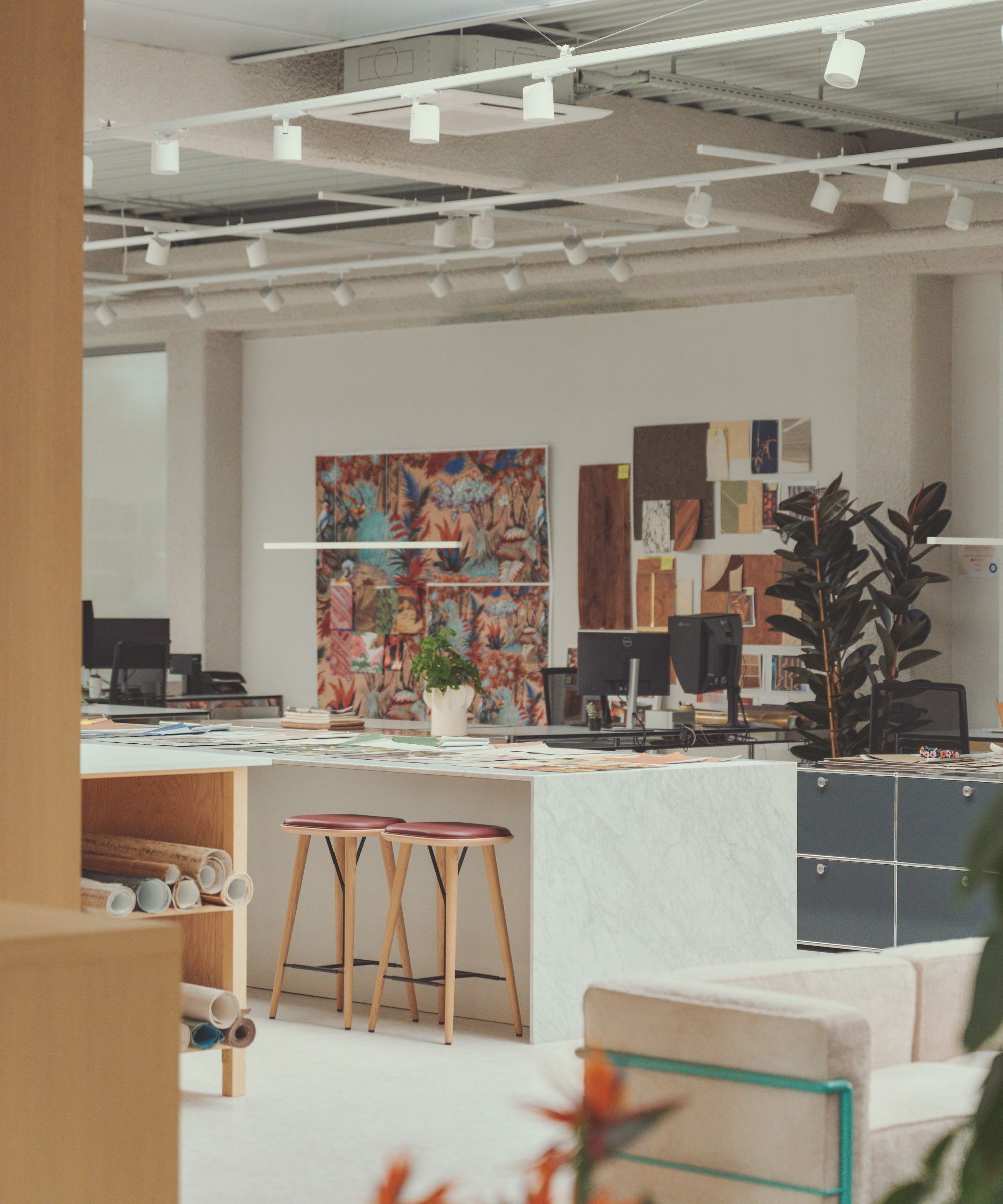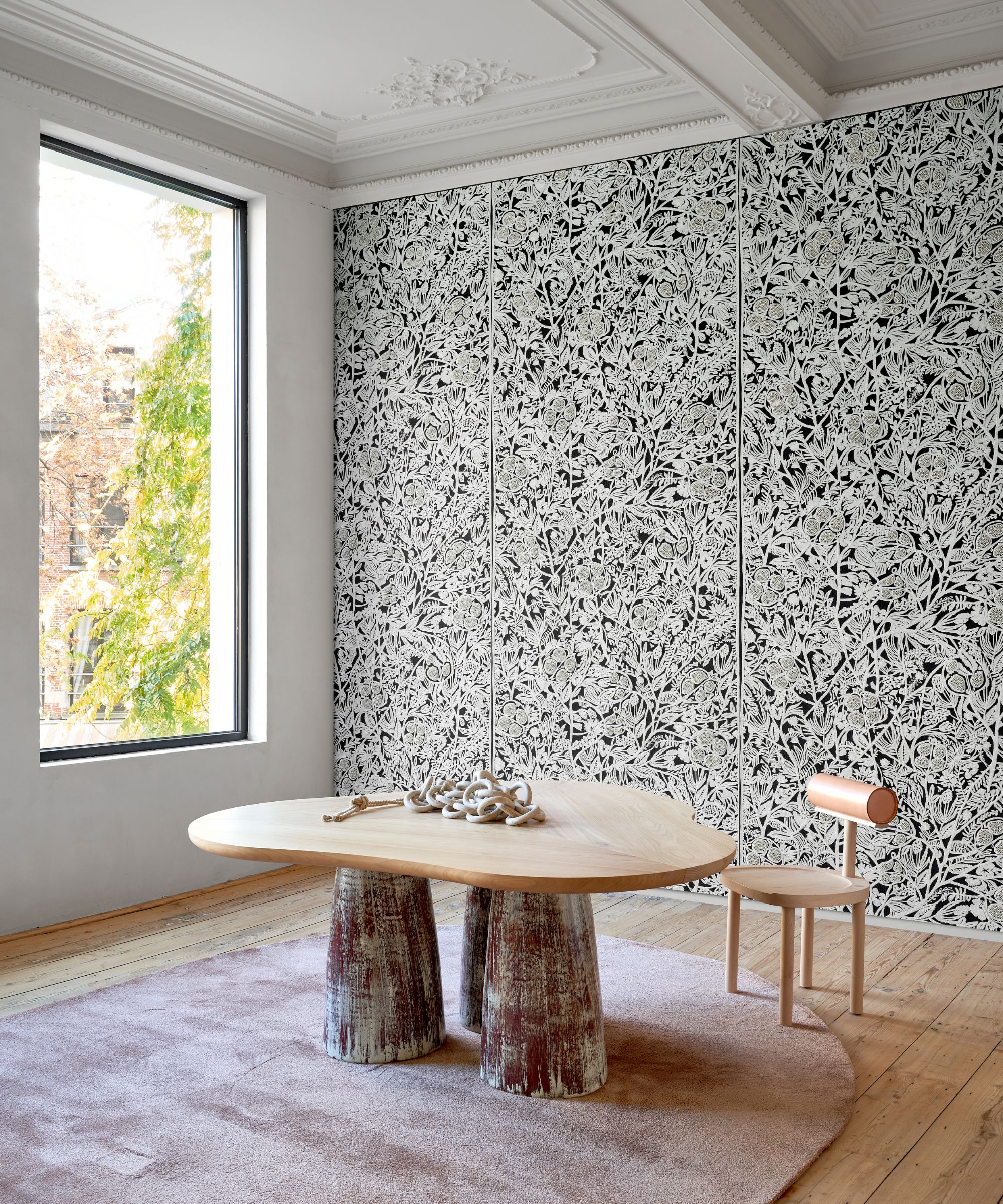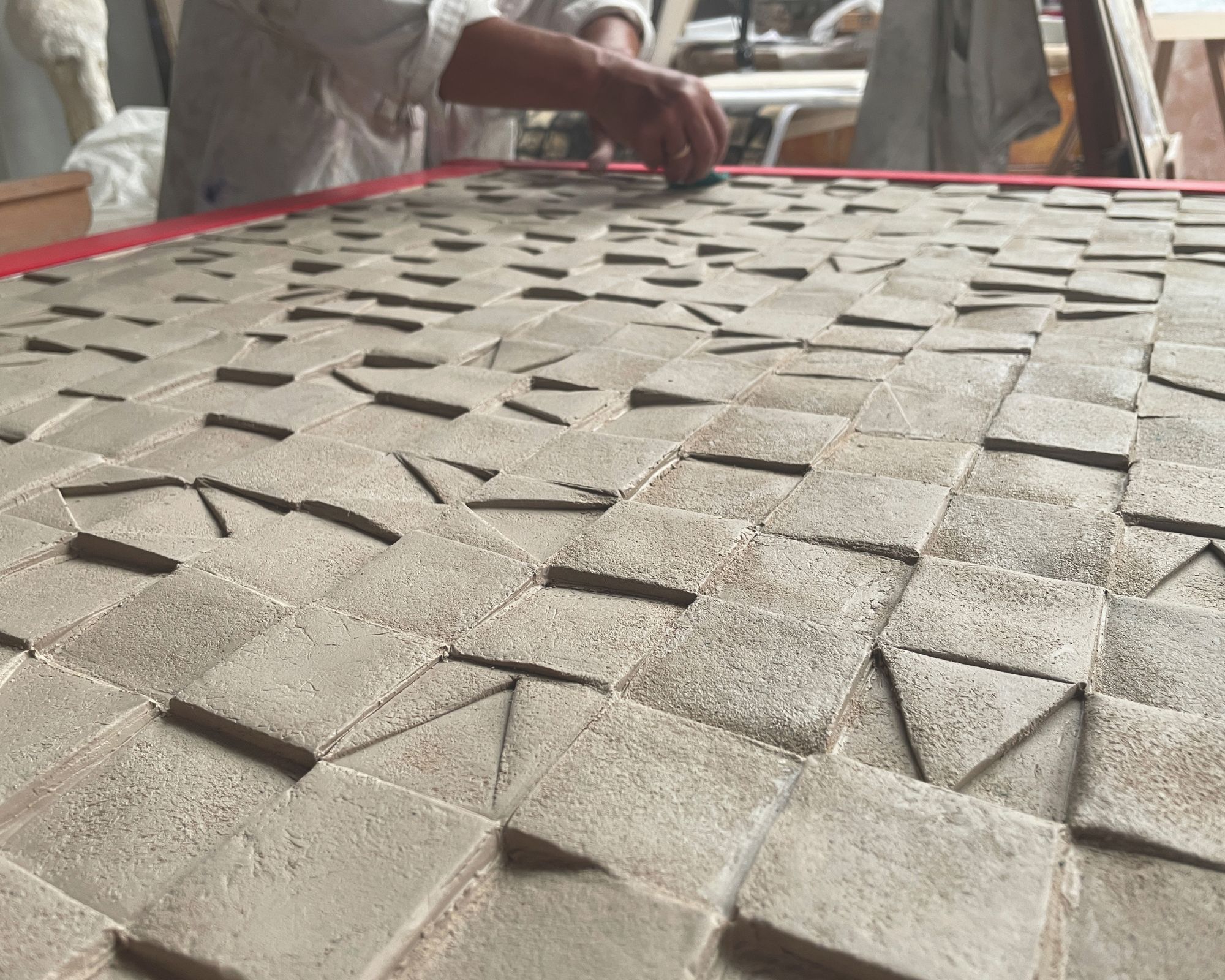
Even the most evocative wallpaper can often feel familiar, even predictable. But from its renowned in-house studio, the Belgian design house of Arte is proving there is a far more luxurious, artful alternative.
For years, the family-run brand has transformed walls into tactile, sophisticated features, employing innovative wallpaper ideas, materials, and a signature design philosophy. They understand that wallcoverings are the new defining element in elite home décor, turning vast spaces into grand statements and intimate rooms into rich, layered sanctuaries.
We delve inside this esteemed firm to meet the visionaries behind Arte and discover the compelling philosophy that drives their world-class craft.

‘Growing up, my father would bring a wallpaper home, open the roll and hang it behind a lamp to see what it would look like in a real setting. He’d ask us “Do you like it?”, explain how it was made, which machines were used, so we were always involved and surrounded by that world,’ recalls Philippe Desart, managing director of Belgium brand Arte.
This deep-rooted passion for all things wall decor and design seems to run in the genes; the family business founded by his grandfather is now in its third generation, with Philippe and his brother, fellow managing director Steven, at the helm since 2009.
The company began as paint manufacturer Desart Paints, but once Philippe’s father, Jean Pierre, joined the firm in 1968, he set about widening its scope to include wallpapers, allured by their potential to bring not only colour, but texture and pattern to interiors.
‘My father said that paint was quite boring – of course, you have colour palettes and different combinations, but all the competitors had similar colours and formulations. He wanted to bring something more creative to the company,’ explains Philippe.

Originally distributing the designs of others, Jean Pierre’s keen instinct for innovation and experimentation led the business to bring design and manufacturing in-house, enabling it to create pioneering designs and technical advances in the industry.
‘My father was one of the first to bring non-woven wallpapers to the market. That was 30 years ago. Today, they’re all non-woven, because it’s more stable. We care about making it easy for the installer. You can make something beautiful, but it also needs to be possible to get it on the wall.’
By 1981 paints were phased out and the Arte brand was born.
'We want to do something different,playing with textures and materials– I think that is what we are good atand has been part of our success'

Today Arte is renowned as one of the world’s leading specialist wallcovering brands, known for its unparalleled – and often unexpected – array of materials and techniques, from intricate embroidery to handwoven raffia, washed linen, and panoramic printed murals.
This is thanks in part to its state-of-the-art production facility at its headquarters in Zonhoven, Belgium, which houses tailor-made machinery for screen-printing on textured surfaces with materials including metal foil, velvet, and lacquer.
Meanwhile, colour mixing is achieved by a hybrid of computer processes and manual fine-tuning by eye to achieve perfect consistency – crucial for wallcoverings where any variation is easily detected once hung. Innovation is still very much at the heart of the brand, says Philippe; ‘We want to do something different – sophisticated, elegant, playing with different textures and materials – I think that is what we are good at and has been part of our success.’



Enter Arte’s 10-strong in-house design studio, headed up by creative director Frederik Decoopman. A hive of creativity and exploration, it produces around 50 designs a year, using materials as wide-ranging as denim, silk, and banana bark, as well as a plethora of techniques including inlay, weaving, and printing.
Frederik says that inspiration for a collection can come from a range of sources: ‘A piece of art, a shape, a material, we don’t look too much at wallpaper trends, we look mostly at what’s going on in furniture or fashion.’
After the initial spark of an idea, a collection is built out around it using the myriad techniques at the studio’s disposal – ‘What texture do we want? Is it a screen-print, is it a vinyl, a metallic? The idea may not be new, but if you do something different with it, you get a totally different look and feel; that’s what we try to achieve.’
But doing things differently comes with challenges, especially when the bar for quality is set so high. Designs such as La Perle, with its delicate embroidery embellished with pearls, and more recently, the relief plasterwork-like Babylon collection posed the studio many manufacturing problems to overcome, recalls Frederik.
‘The artwork for Babylon was made by an artist, by hand, in plaster. Then we had to scan the design and invest in all the tools for these new processes. We didn’t know if it would work until the moment it was done.’ Although failures along the way are inevitable (‘It happens a lot!’ says Frederik), it doesn’t deter the studio from the pursuit of something new – it’s currently working on a design that’s already 18 months into development. ‘We have the will to continue until we definitely know it doesn’t work; we always push the limits to know how far we can go.’

Happily for Arte, it seems the demand for daring use of materials and wallcoverings is rising (‘wallpaper’ was a dirty word among designers not so long ago, according to Philippe).
As Frederik notes, ‘In the past, people were less keen to take risks in their interiors, choosing the safe things, and I think that’s changing. People are ready to decorate again, and aren’t afraid to combine textures on their walls, or even their ceilings.’
As for the future of the family business, there’s promise on that front too, hopes Philippe; ‘I have two daughters and my brother has two daughters – wouldn’t it be great if the company could be run by four women? That would be every father’s dream.’







